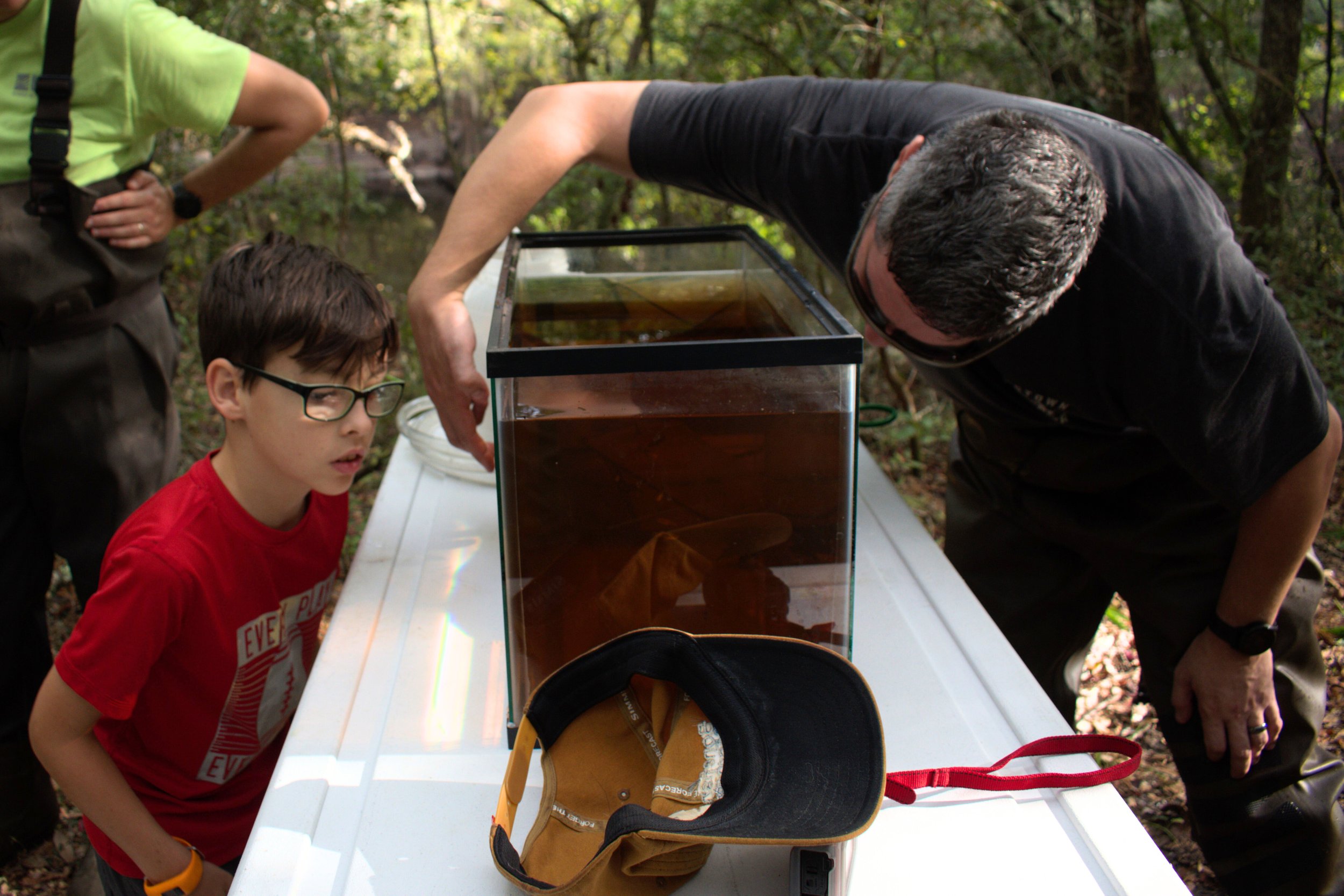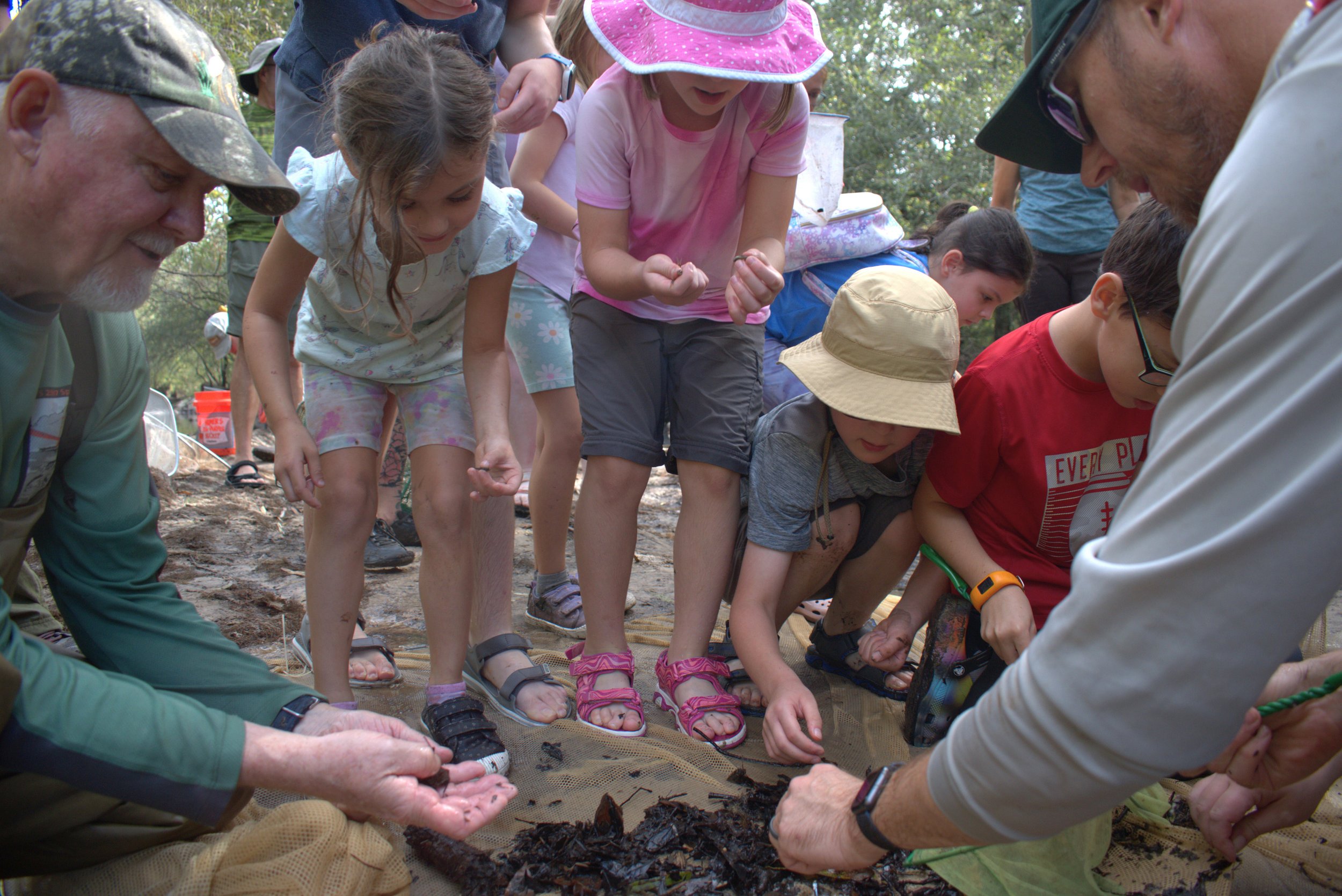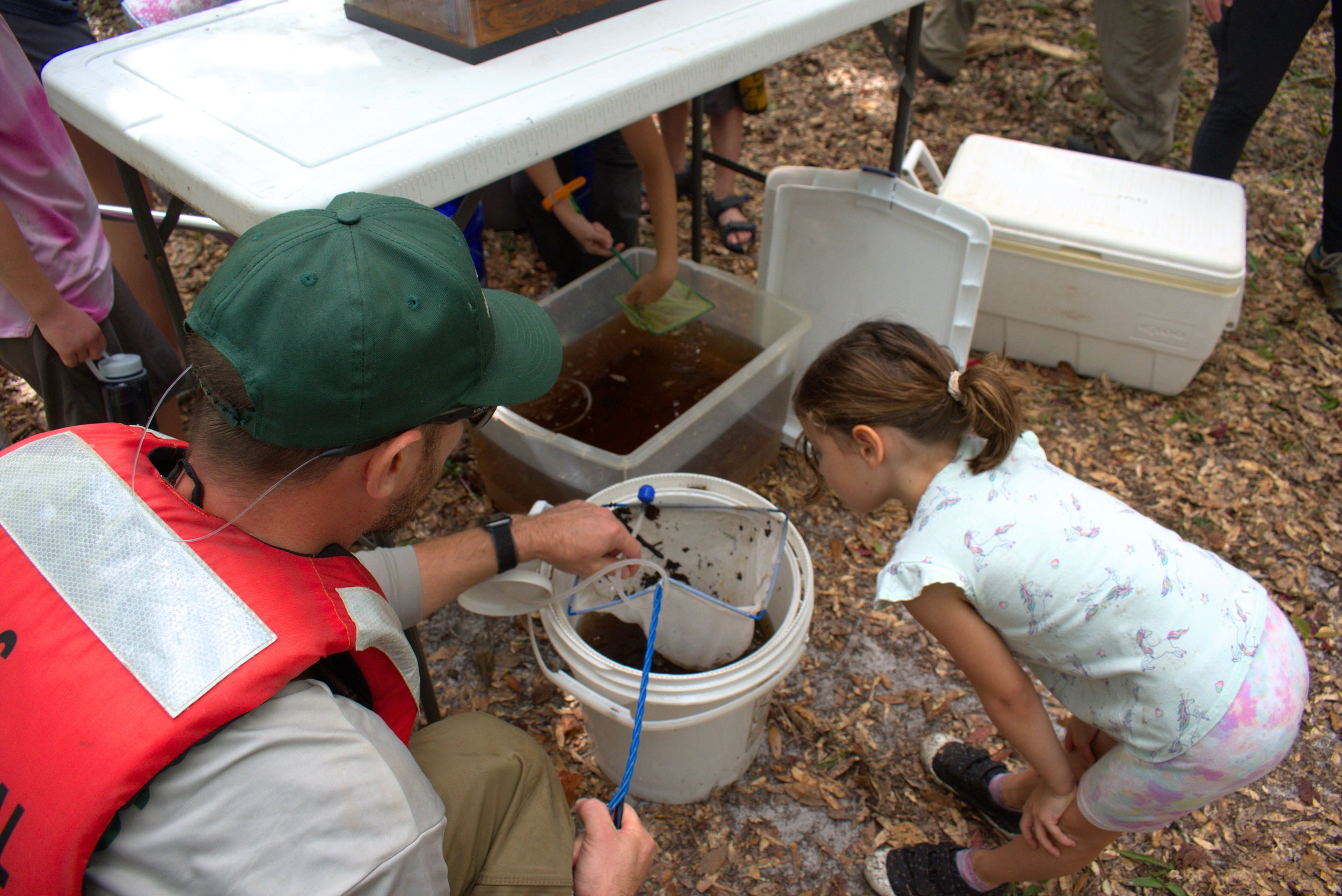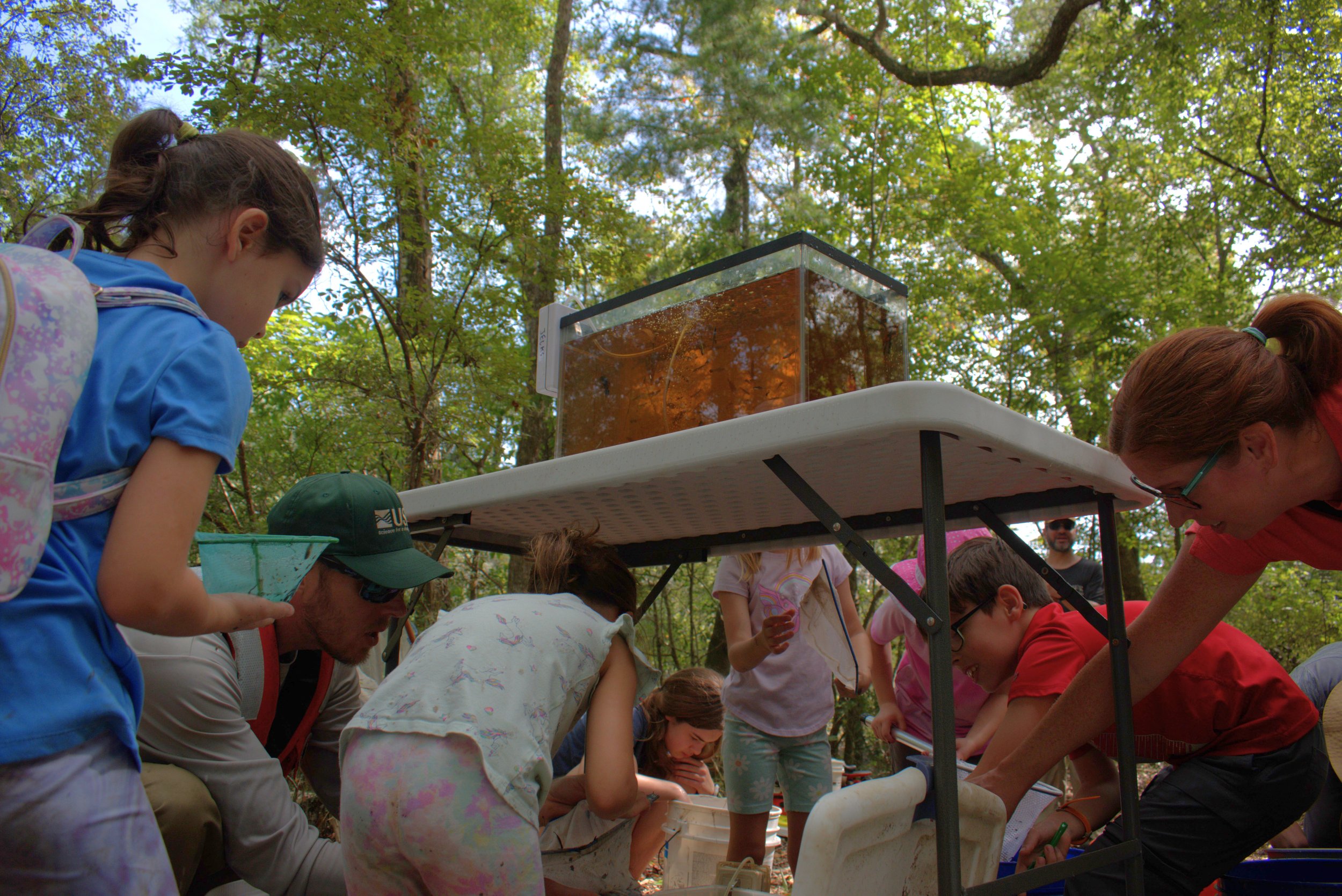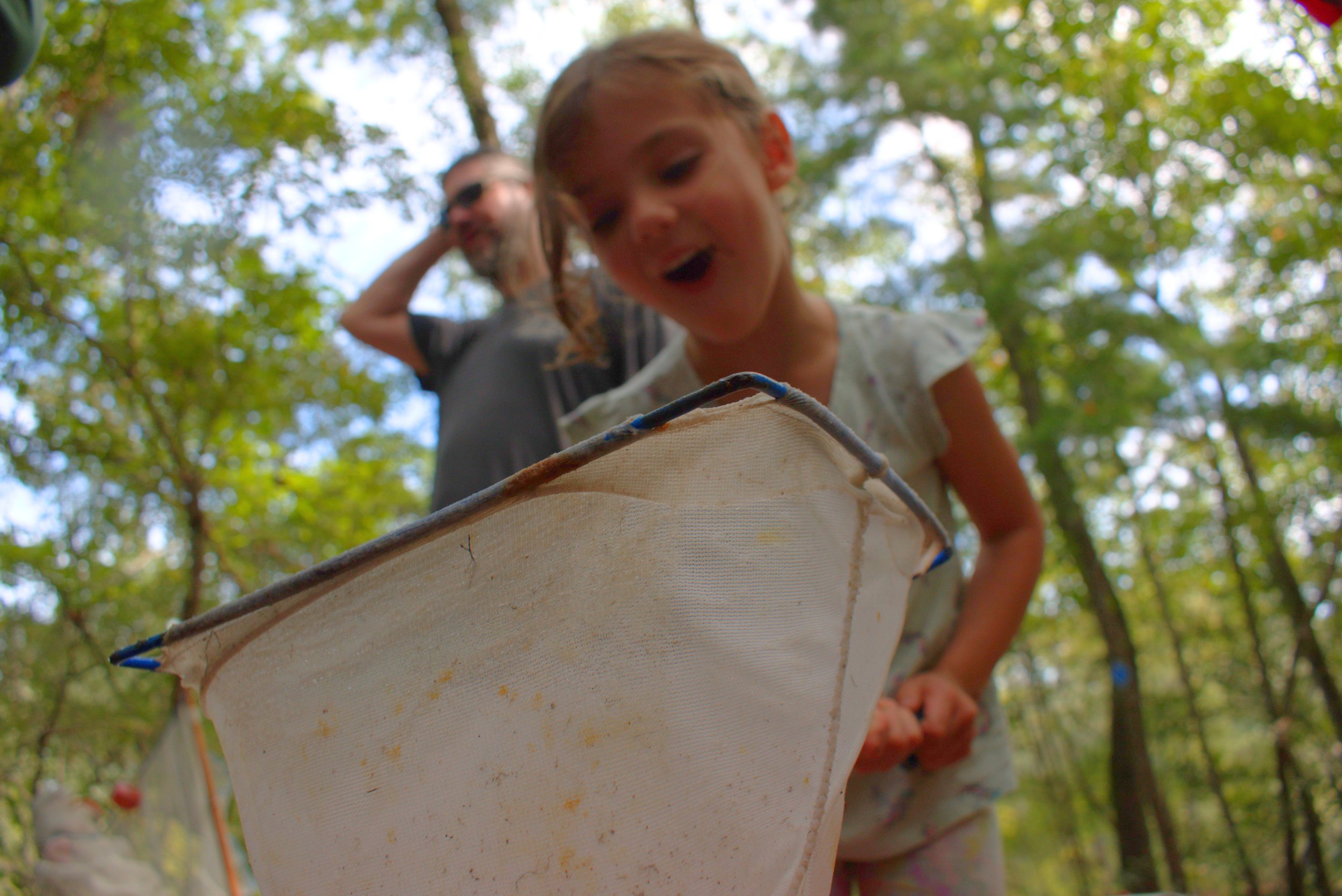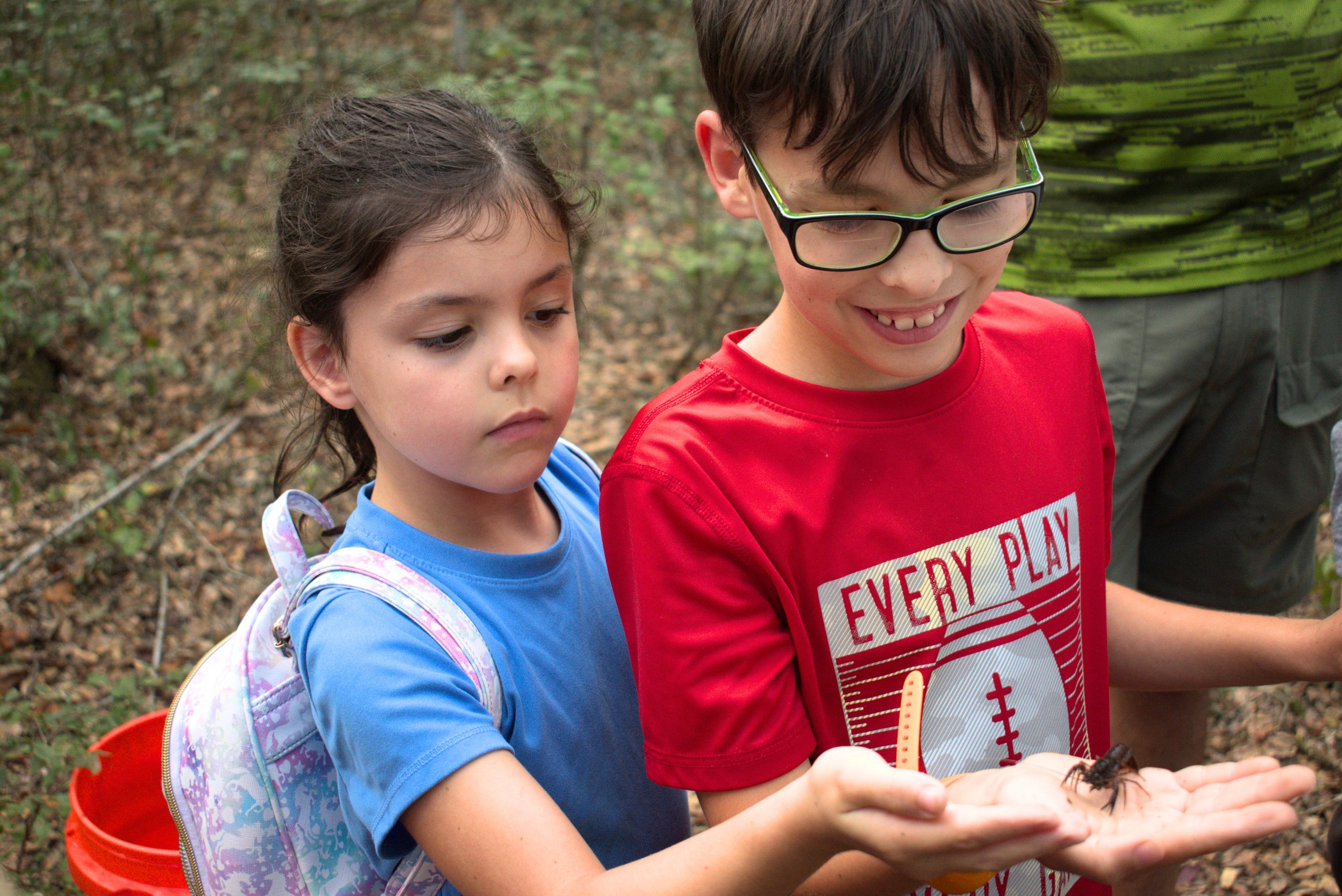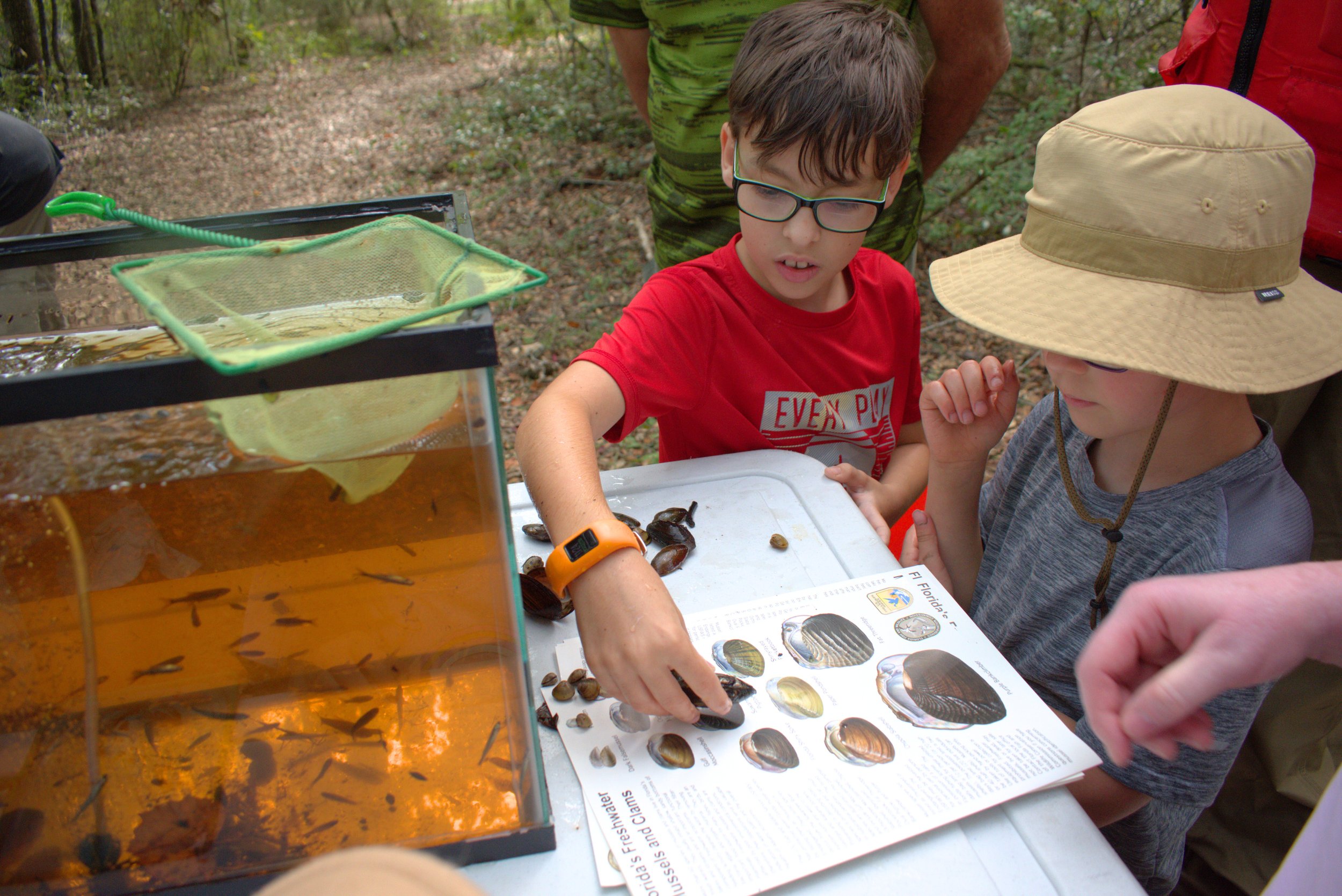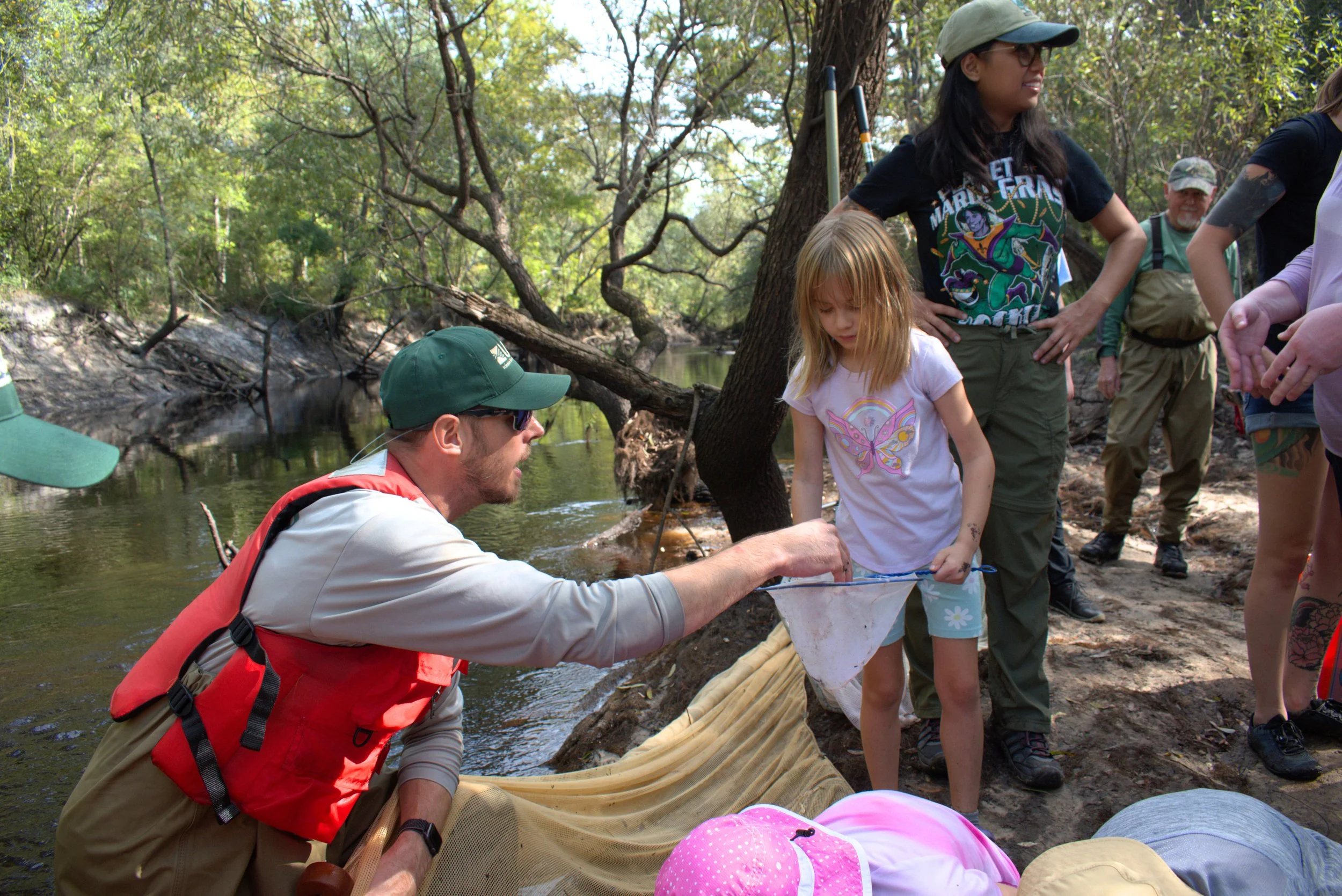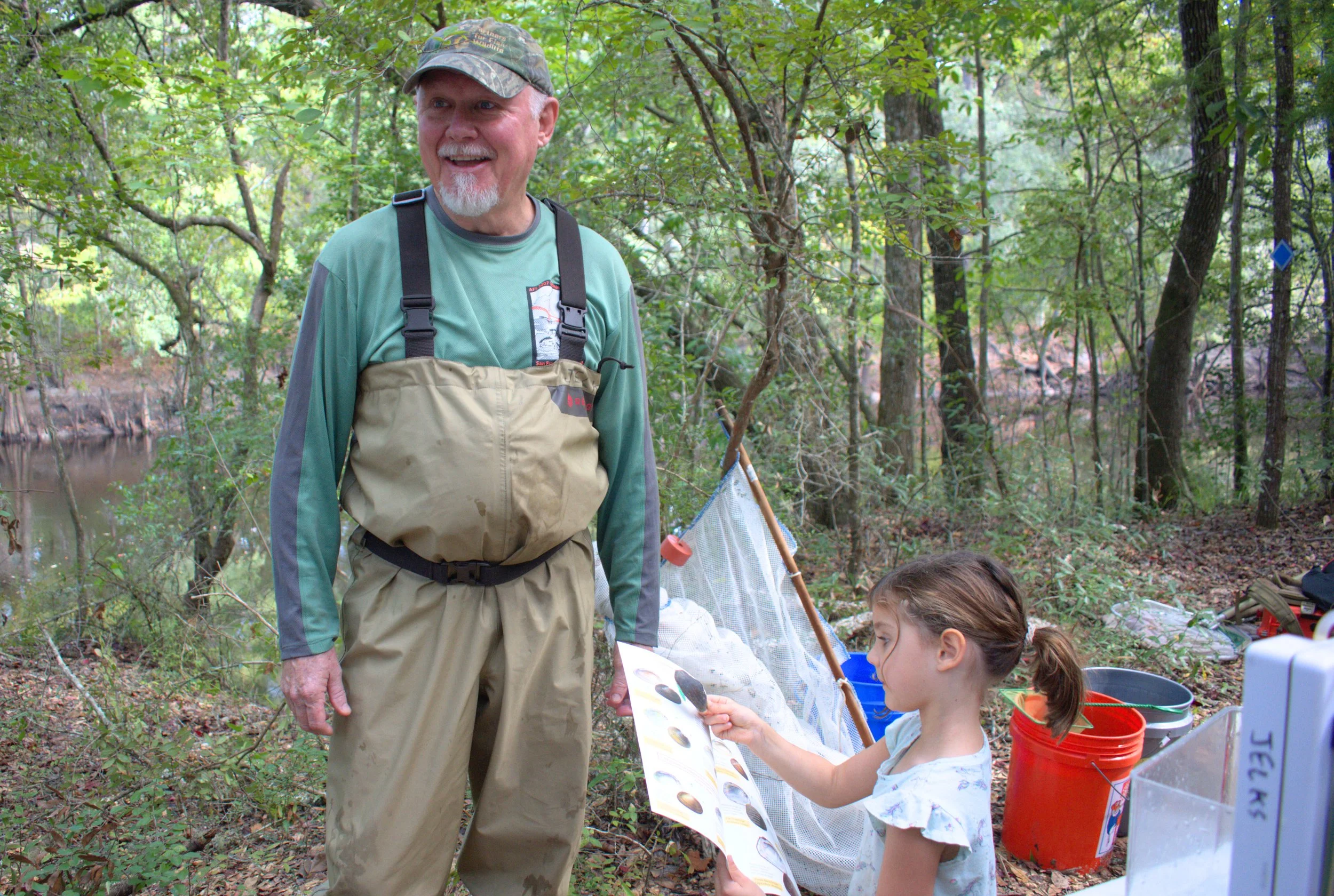Bringing Nature to the Next Generation
By Marilyn Young
“I found one!” she cries as the long seine net is dragged up onto the muddy shore. With sheer delight, an inquisitive seven-year old plucks a tiny crustacean out of a net and drops it into an observation water bucket for a closer look. With her face pressed to the bucket at a distance of less than an inch, she carefully inspects her find – a two-inch crawfish with long antennae and wriggly legs crawling about its temporary habitat. The junior “scientist” is one of a group of excited youth who attended the Freshwater Fish and Critters event hosted by the Alachua Conservation Trust at the Santa Fe River Preserve in October 2023. The group was led by Howard Jelks and scientists from the U.S. Geological Society and attended by a mixture of environmental students, science professionals, and nature lovers.
One young scientist helps USGS staff collect critters from the sein net.
The Santa Fe River Preserve protects 1,067 acres of land along the Santa Fe River in Alachua, Florida. The preserve is owned and managed by ACT and is one of several that are open to the public. Events such as the Freshwater Fish and Critters event are held by ACT to create experiences in special spaces like the Santa Fe River Preserve with those interested in learning about Florida’s diverse ecosystems or who just want to spend a day surrounded by nature. On this particular day, attendees were provided the special opportunity to learn about the various fish, crustacean, insect and bivalve species living in the preserve from experts in the field. Eager attendees received a crash course in a hands-on classroom in the woods complete with nets, observation tanks, and training manuals.
Questions were fielded by the scientists before the inquisitive group traveled down the shrubby banks of the Santa Fe River to the first stop under the tree canopy shading a backwoods creek with shallow tannic water and dark brown slippery mud. The seine nets were dragged through the dark shallow water and revealed a glimpse of what lies beneath the calm surface. Young participants were first on the scene and were reaching into nets before the leading scientists could even reach the banks. Wiggling, small shiny fish were collected with little fingers and placed into buckets for later identification. With toes now wet, the group was unfazed by the trek through the water to reach a larger span of the Santa Fe River, about 40 wide and 2-3 feet deep.
Participants transfer their critters into the observation tanks.
The river banks were a sandy-muddy mix and a distinct northern flow could be seen on the water’s surface. The group, to an extent, patiently, waited on shore for the scientists to drag the seine nets through the dark water and haul in a variety of small fish species, aquatic insect larvae, crawfish, freshwater mussels and clams. Most species were endemic to the area with exception of the Asian clams that, unfortunately, outnumbered the native bivalves 3:1. Upon satisfactory sample collections, the group returned to their outdoor classroom for in-depth discussion on the various species discovered. Even if the attendees do not recall all the details explained by the USGS Scientists, that day on the Santa Fe River was sure to leave a lasting impression. “We packed a lot of information into our session, but hope people came away with a greater appreciation for river ecosystems.” Howard Jelks, ret. Research Fish Biologist, USGS Wetland and Aquatic Research Center.
Howard Jelks pictured with one of the event’s young scientists.
Being able to experience and enjoy nature is key to appreciating it and hopefully fostering the desire for future preservation. Today’s youth are vulnerable to nature disconnects being surrounded by technology and seeing the world through computer screens. Opportunities and programs such as this event and the teen-focused Young Leaders program hosted by ACT, can help bridge the disconnect and foster a new generation of nature lovers and future conservationists. If you have a younger member in your life, consider taking them on an outdoor adventure or spend an hour or two on a nice sunny day listening to the birds chirping in the morning, breathing the salty sea air at the beach or strolling down a shady path at a nearby forest. As Floridians, we are very fortunate to have a variety of natural spaces to visit and engaging our youth can help facilitate the next generation of conservationists. As a wise Native American Chief Seattle once said, “We do not inherit the Earth from our ancestors, we borrow it from our children.”

